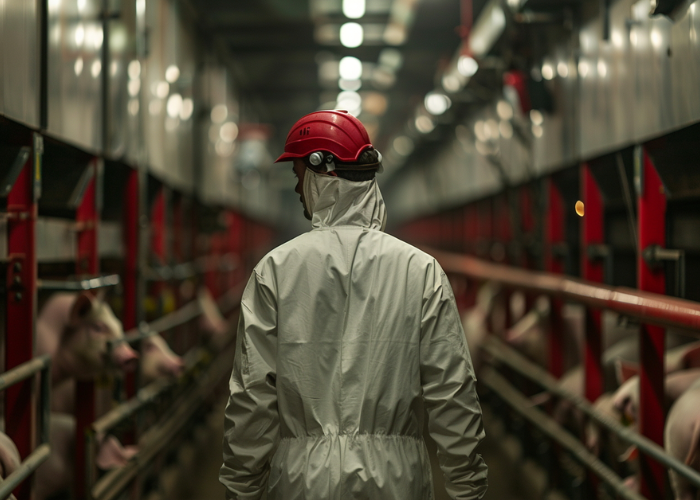African Swine Fever: Managing the Threat to Italy’s MarketBY ANTONIO PICASSO
- 17 September 2024
- Posted by: Competere
- Category: Senza categoria

African swine fever (ASF) is a serious food security issue, affecting the availability of raw materials for production, product reputation, and consumer affordability. Antonio Picasso delves into this topic in an article published in Italian on Formiche.net.
Read the full article in Italian on Formiche.net or below >>>
Italy’s agri-food industry is under threat. This time, it’s not due to misleading labels pushed by some European bureaucrat or anti-meat extremist campaigns. Yes, those issues shouldn’t be taken lightly, and our representatives in the newly elected European Parliament must swiftly address them as national priorities. But right now, the immediate concern is African swine fever (ASF).
THE THREAT OF AFRICAN SWINE FEVEW
It’s an epidemic with hidden aspects that, although less severe in Europe than in Asia and Africa, is affecting farmers across much of Europe: Germany, the Netherlands, as well as Croatia and Poland. And Italy is no exception. Whether due to its geographical position—leaving it exposed to various Mediterranean influences—or the sheer size of its sector, Italy remains vulnerable. In fact, Italian cured meats rank third in Europe for production (1.5 million tons annually), but they dominate in revenue (9.1 billion euros).
A clear understanding of this disease is critical. ASF initially struck wild boars before spreading to farm pigs. Let’s be clear: there’s no risk of human infection. Even if I were to accidentally consume ham made from contaminated meat—an impossibility, thanks to the rigorous and foolproof controls in place—I would not be at risk. Thus, ASF is a food security issue, referring to the availability of raw material for production, the reputation of products, and the economic sustainability for consumers.
MEAT AND CURED MEATS: INFLATION AND THE COLLAPSE OF EXPORTS
It’s no coincidence that the meat and cured meats sector is among the hardest hit by the inflationary pressures that have plagued the entire agri-food industry for over a year. Alongside rising costs, the sector is losing market shares and facing setbacks to brands that are icons of Made in Italy. Some countries have already begun blocking imports of Italian products as a precautionary measure. According to Assica (the Industrial Association of Meat and Cured Meat Producers), since January 2022, Italy’s cured meat industry has lost 20 million euros in exports every month due to ASF.
ASF: WHAT EMERGENCY MEASURES ARE IN PLACE?
In short, African swine fever is not just a health issue—it’s also an economic and political one. As recently as early August, the EU Veterinary Emergency Team of the European Commission noted that Italy’s virus containment measures were insufficient. In response, Rome appointed Giovanni Filippini, former Director General of Veterinary Services at the Ministry of Health, as special commissioner for ASF. Businesses welcomed this move, as they had previously criticized the government for its slow response to their requests for intervention and support for their independent actions. However, despite Italy’s overdue response, it remains to be seen what steps our European partners, equally if not more affected by the virus, are taking.
As the government navigates the early stages of its financial plan, businesses have called for two key measures: a tax credit to support investment and a reduction in VAT from 10% to 4% on consumer products.
BUT WHAT IS REALLY NEEDED TO DEFEAT ASF?
While these emergency measures may provide short-term relief, they don’t address the root of the issue. In a world of porous borders and constant trade, stricter control mechanisms are needed. We can’t afford to close markets. The growth of Made in Italy, especially in the agrifood sector, cannot coexist with tariffs and protectionism. While ASF is first and foremost a health crisis, the responsibility falls on livestock farming and veterinary science—working in collaboration with businesses and institutions—to implement prevention strategies and monitoring technologies throughout the entire supply chain. It’s then up to policymakers to establish guidelines, allocate the necessary resources, and ultimately reassure consumers that everything is under control.
Image credits: courtesy of Formiche.net
